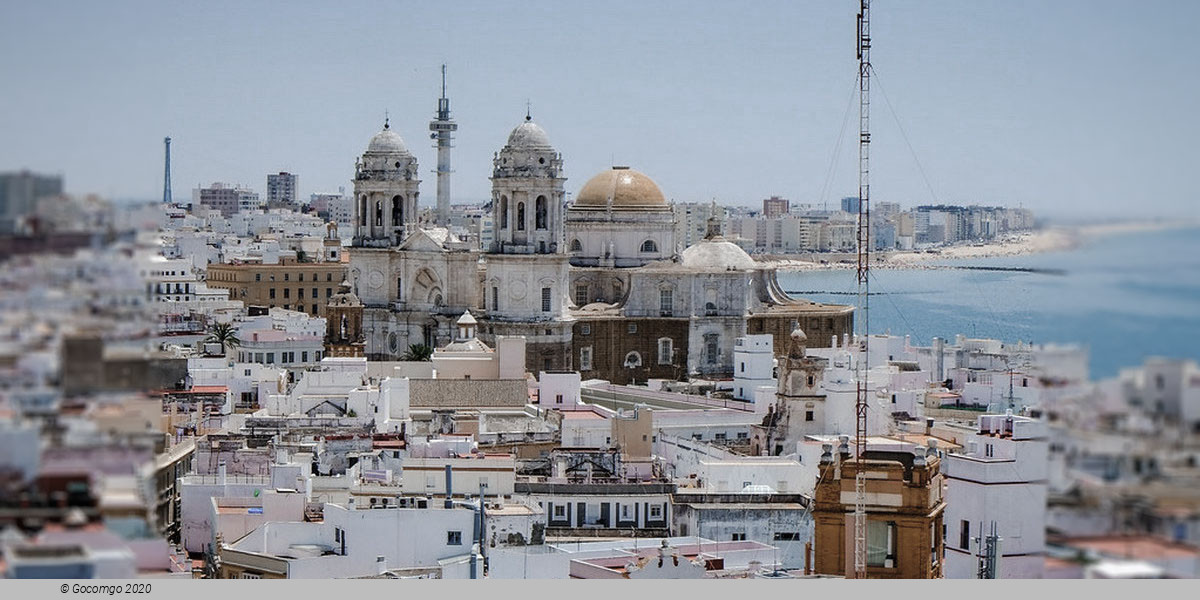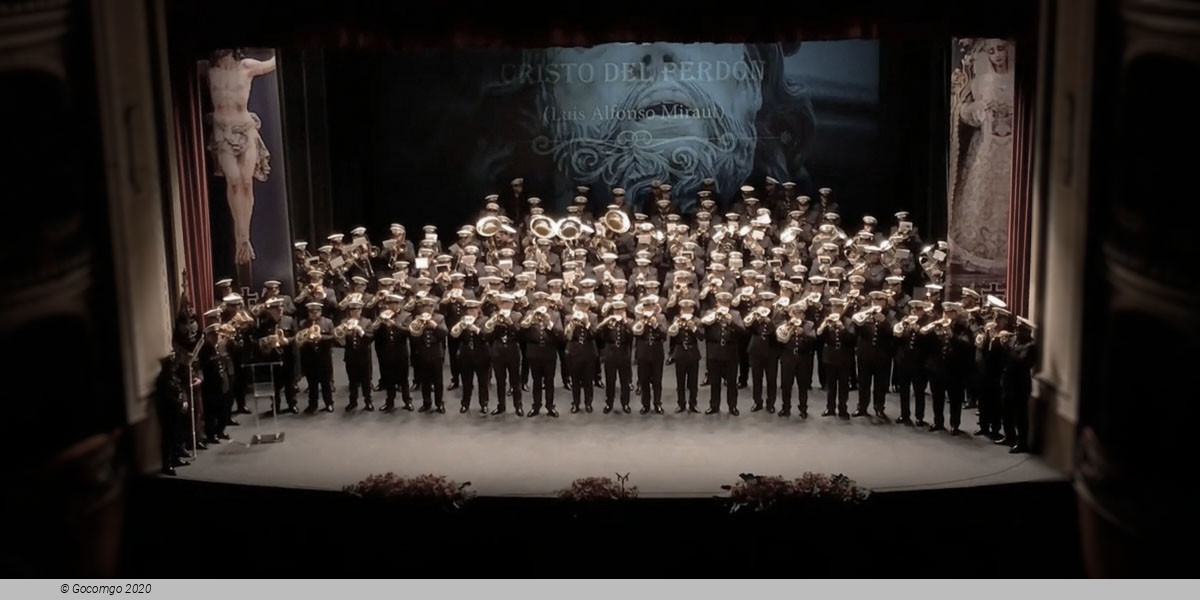Venues in Cádiz

Cádiz is a city and port in southwestern Spain. It is the capital of the Province of Cádiz, one of eight that make up the autonomous community of Andalusia. Cádiz, one of the oldest continuously inhabited cities in Western Europe, with archaeological remains dating to 3100 years, was founded by the Phoenicians. It has been a principal home port of the Spanish Navy since the accession of the Spanish Bourbons in the 18th century. It is also the site of the University of Cádiz.
History
Founded around 1104 BC as Gadir or Agadir by Phoenicians from Tyre, Cádiz is mostly regarded as the most ancient city still standing in Western Europe. The Phoenicians established a port in the 7th century BC. The expeditions of Himilco around Spain and France, and of Hanno around Western Africa began there. The Phoenician settlement traded with Tartessos, a city-state whose exact location remains unknown but is thought to have been somewhere near the mouth of the Guadalquivir River.
One of the city's notable features during antiquity was the temple on the south end of its island dedicated to the Phoenician god Melqart, who was conflated with Hercules by the Greeks and Romans under the names "Tyrian Hercules" and "Hercules Gaditanus". It had an oracle and was famed for its wealth. In Greek mythology, Hercules was sometimes credited with founding Gadeira after performing his tenth labor, the slaying of Geryon, a monster with three heads and torsos joined to a single pair of legs. (A tumulus near Gadeira was associated with Geryon's final resting-place.) According to the Life of Apollonius of Tyana, the "Heracleum" (i.e., the temple of Melqart) was still standing during the 1st century. Some historians, based in part on this source, believe that the columns of this temple were the origin of the myth of the "pillars of Hercules".
The city fell under the sway of Carthage during Hamilcar Barca's Iberian campaign after the First Punic War. Cádiz became a depot for Hannibal's conquest of southern Iberia, and he sacrificed there to Hercules/Melqart before setting off on his famous journey in 218 BC to cross the Alps and invade Italy. Later the city fell to Romans under Scipio Africanus in 206 BC. Under the Roman Republic and Empire, the city flourished as a port and naval base known as Gades. Suetonius relates how Julius Caesar, when visiting Gades as a quaestor (junior senator) saw a statue of Alexander the Great there and was saddened to think that he himself, though the same age, had still achieved nothing memorable.
The people of Gades had an alliance with Rome and Julius Caesar bestowed Roman citizenship on all its inhabitants in 49 BC. By the time of Augustus's census, Cádiz was home to more than five hundred equites (members of the wealthy upper class), a concentration rivaled only by Patavium (Padua) and Rome itself. It was the principal city of the Roman colony of Augusta Urbs Julia Gaditana. An aqueduct provided fresh water to the town (the island's supply was notoriously bad), running across open sea for its last leg. However, Roman Gades was never very large. It consisted only of the northwest corner of the present island, and most of its wealthy citizens maintained estates outside of it on the nearby island or on the mainland. The lifestyle maintained on the estates led to the Gaditan dancing girls becoming infamous throughout the ancient world.
Although it is not in fact the most westerly city in the Spanish peninsula, for the Romans Cádiz had that reputation. The poet Juvenal begins his famous tenth satire with the words: Omnibus in terris quae sunt a Gadibus usque Auroram et Gangen ('In all the lands which exist from Gades as far as Dawn and the Ganges...').
The overthrow of Roman power in Hispania Baetica by the Visigoths in 410 saw the destruction of the original city, of which there remain few remnants today. The site was later reconquered by Justinian in 551 as part of the Byzantine province of Spania. It would remain Byzantine until Leovigild's reconquest in 572 returned it to the Visigothic Kingdom.
Under Moorish rule between 711 and 1262, the city was called Qādis, whence the modern Spanish name was derived. A famous Muslim legend developed concerning an "idol" (sanam Qādis) over 100 cubits tall on the outskirts of Cádiz whose magic blocked the strait of Gibraltar with contrary winds and currents; its destruction by Abd-al-Mumin c. 1145 supposedly permitted ships to sail through the strait once more. It also appeared (as Salamcadis) in the 12th-century Pseudo-Turpin's history of Charlemagne, where it was considered a statue of Muhammad and thought to warn the Muslims of Christian invasion. Classical sources are entirely silent on such a structure, but it has been conjectured that the origin of the legend was the ruins of a navigational aid constructed in late antiquity. Abd-al-Mumin (or Admiral Ali ibn-Isa ibn-Maymun) found that the idol was gilded bronze rather than pure gold, but coined what there was to help fund his revolt. The Moors were finally ousted by Alphonso X of Castile in 1262.
During the Age of Exploration, the city experienced a renaissance. Christopher Columbus sailed from Cádiz on his second and fourth voyages and the city later became the home port of the Spanish treasure fleet. Consequently, it became a major target of Spain's enemies. The 16th century saw a series of failed raids by Barbary corsairs; the greater part of the old town was consumed in a major fire in 1569; and in April, 1587, a raid by the Englishman Francis Drake occupied the harbor for three days, captured six ships, and destroyed 31 others (an event which became known in England as 'The Singeing of the King of Spain's Beard'). The attack delayed the sailing of the Spanish Armada by a year.
The city suffered a still more serious attack in 1596, when it was captured by an Anglo-Dutch fleet, this time under the Earls of Essex and Nottingham. 32 Spanish ships were destroyed and the city was captured, looted and occupied for almost a month. Finally, when the royal authorities refused to pay a ransom demanded by the English for returning the city intact, they burned much of it before leaving with their booty. A third English raid was mounted against the city in 1625 by George Villiers, 1st Duke of Buckingham, and Edward Cecil, but the attempt was unsuccessful. During the Anglo-Spanish War, Admiral Robert Blake blockaded Cádiz from 1655 to 1657. In the 1702 Battle of Cádiz, the English attacked again under George Rooke and James Butler, 2nd Duke of Ormonde, but they were repelled after a costly siege. In the 18th century, the sand bars of the Guadalquivir forced the Spanish government to transfer its American trade from Seville to Cádiz, which now commanded better access to the Atlantic. Although the empire itself was declining, Cádiz now experienced another golden age from its new importance. It became one of Spain's greatest and most cosmopolitan cities and home to trading communities from many countries, the richest of which were the Irishmen. Many of today's historic buildings in the Old City date from this era.
During the Napoleonic Wars, Cádiz was blockaded by the British from 1797 until the Peace of Amiens in 1802 and again from 1803 until the outbreak of the Peninsular War in 1808. In that war, it was one of the few Spanish cities to hold out against the invading French and their candidate Joseph Bonaparte. Cádiz then became the seat of Spain's military high command and Cortes (parliament) for the duration of the war. It was here that the liberal Spanish Constitution of 1812 was proclaimed. The citizens revolted in 1820 to secure a renewal of this constitution and the revolution spread successfully until Ferdinand VII was imprisoned in Cádiz. French forces secured the release of Ferdinand in the 1823 Battle of Trocadero and suppressed liberalism for a time. In 1868, Cádiz was once again the seat of a revolution, resulting in the eventual abdication and exile of Queen Isabella II. The Cortes of Cádiz decided to reinstate the monarchy under King Amadeo just two years later.
In recent years, the city has undergone much reconstruction. Many monuments, cathedrals, and landmarks have been cleaned and restored.


